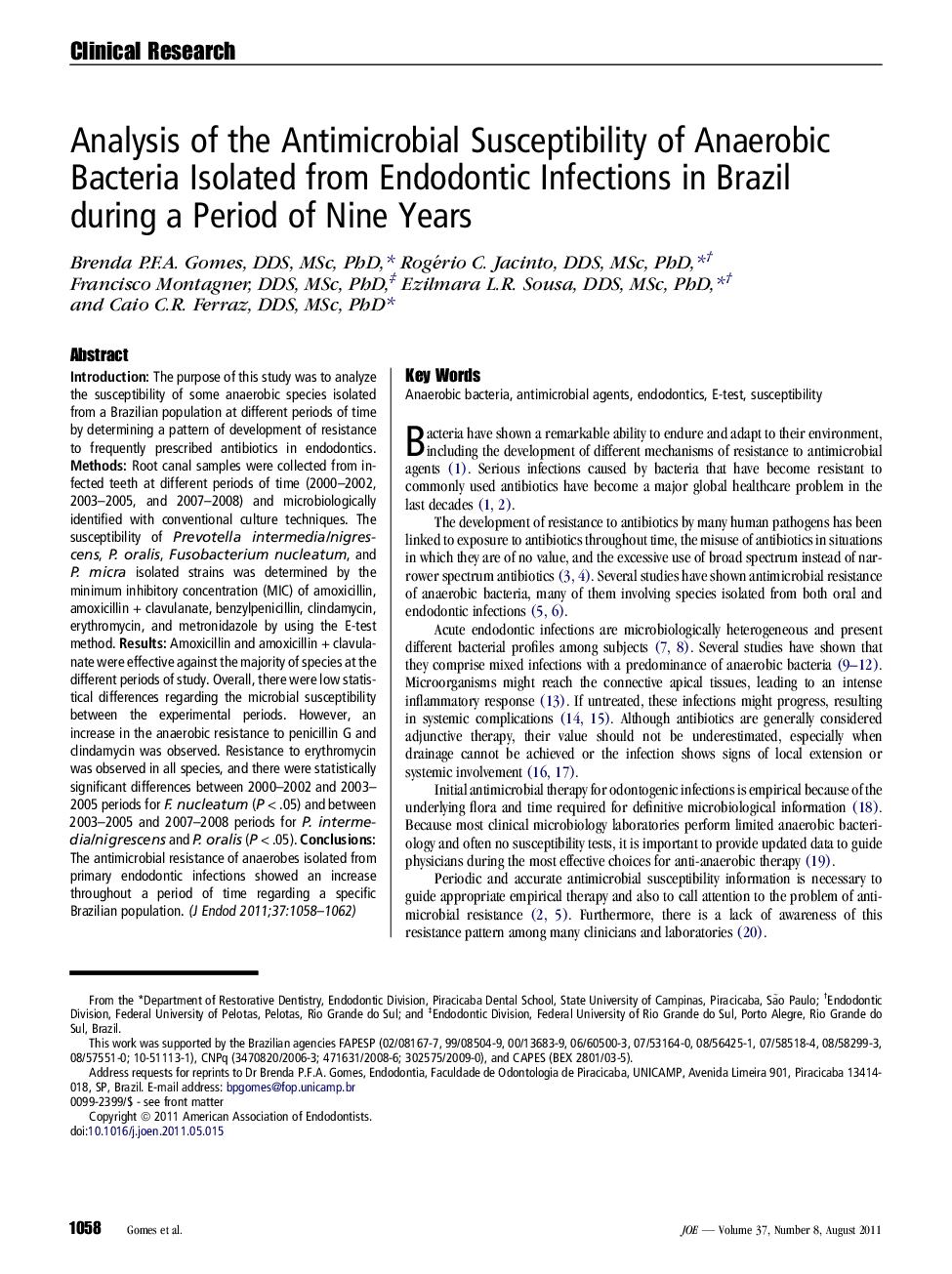| Article ID | Journal | Published Year | Pages | File Type |
|---|---|---|---|---|
| 3148970 | Journal of Endodontics | 2011 | 5 Pages |
IntroductionThe purpose of this study was to analyze the susceptibility of some anaerobic species isolated from a Brazilian population at different periods of time by determining a pattern of development of resistance to frequently prescribed antibiotics in endodontics.MethodsRoot canal samples were collected from infected teeth at different periods of time (2000–2002, 2003–2005, and 2007–2008) and microbiologically identified with conventional culture techniques. The susceptibility of Prevotella intermedia/nigrescens, P. oralis, Fusobacterium nucleatum, and P. micra isolated strains was determined by the minimum inhibitory concentration (MIC) of amoxicillin, amoxicillin + clavulanate, benzylpenicillin, clindamycin, erythromycin, and metronidazole by using the E-test method.ResultsAmoxicillin and amoxicillin + clavulanate were effective against the majority of species at the different periods of study. Overall, there were low statistical differences regarding the microbial susceptibility between the experimental periods. However, an increase in the anaerobic resistance to penicillin G and clindamycin was observed. Resistance to erythromycin was observed in all species, and there were statistically significant differences between 2000–2002 and 2003–2005 periods for F. nucleatum (P < .05) and between 2003–2005 and 2007–2008 periods for P. intermedia/nigrescens and P. oralis (P < .05).ConclusionsThe antimicrobial resistance of anaerobes isolated from primary endodontic infections showed an increase throughout a period of time regarding a specific Brazilian population.
